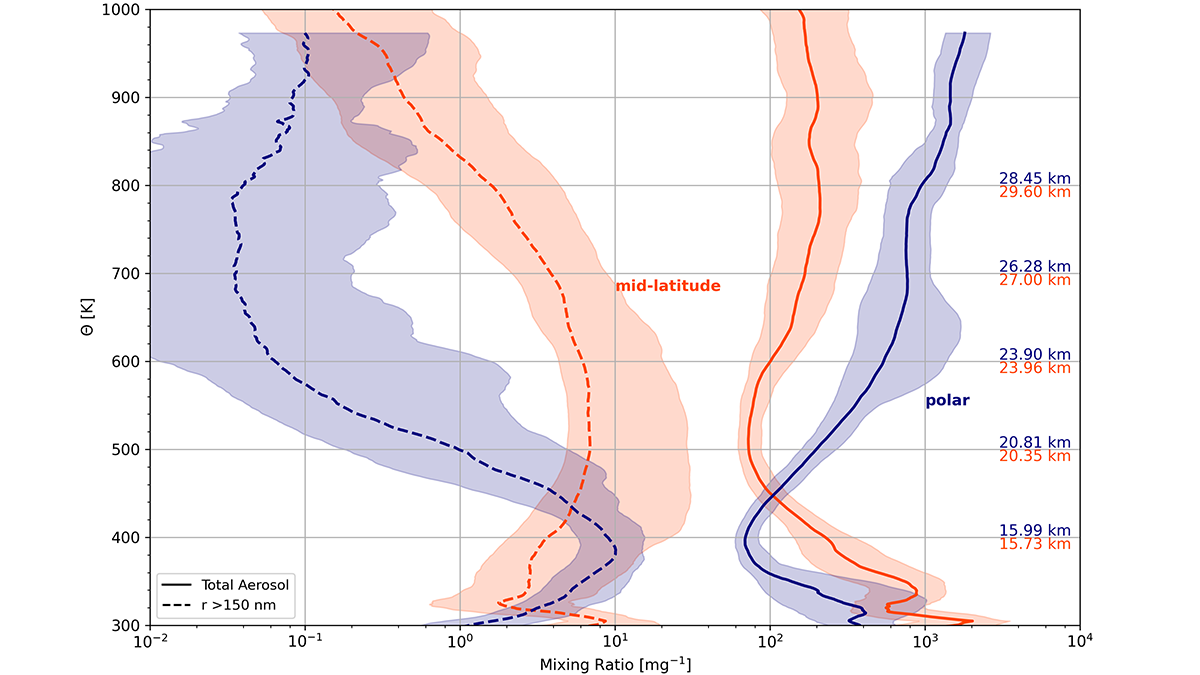Editors’ Highlights are summaries of recent papers by AGU’s journal editors.
Source: Journal of Geophysical Research: Atmospheres
Stratospheric aerosols (small particles) are important for Earth’s radiation balance and atmospheric chemical processes. Aerosols undergo a life cycle of nucleation, growth, and transport throughout the stratosphere, and their sizes range from a few nanometers to many micrometers in diameter. The broad size distribution presents a challenge for observations, best met by in situ balloon or aircraft measurements.
Norgren et al. [2024] report on the Stratospheric Total Aerosol Counter (STAC), a new lightweight balloon instrument that continues a long-term size-resolved observational record beginning in 1974. These global measurements are analyzed to reveal the behavior of large and small particles in the tropics, midlatitude, and polar regions, and their evolution with season and over decades. Key results highlight regions of new particle formation in the tropical upper troposphere, springtime midlatitudes, and polar regions; large concentrations of small particles in the polar middle stratosphere are linked to effects of meteoric smoke. The important impacts of large volcanic eruptions and their long-lasting contributions to the stratospheric background are also highlighted in the long data record.
Citation: Norgren, M., Kalnajs, L. E., & Deshler, T. (2024). Measurements of total aerosol concentration in the stratosphere: A new balloon-borne instrument and a report on the existing measurement record. Journal of Geophysical Research: Atmospheres, 129, e2024JD040992. https://doi.org/10.1029/2024JD040992
—William J. Randel, Editor, JGR: Atmospheres

